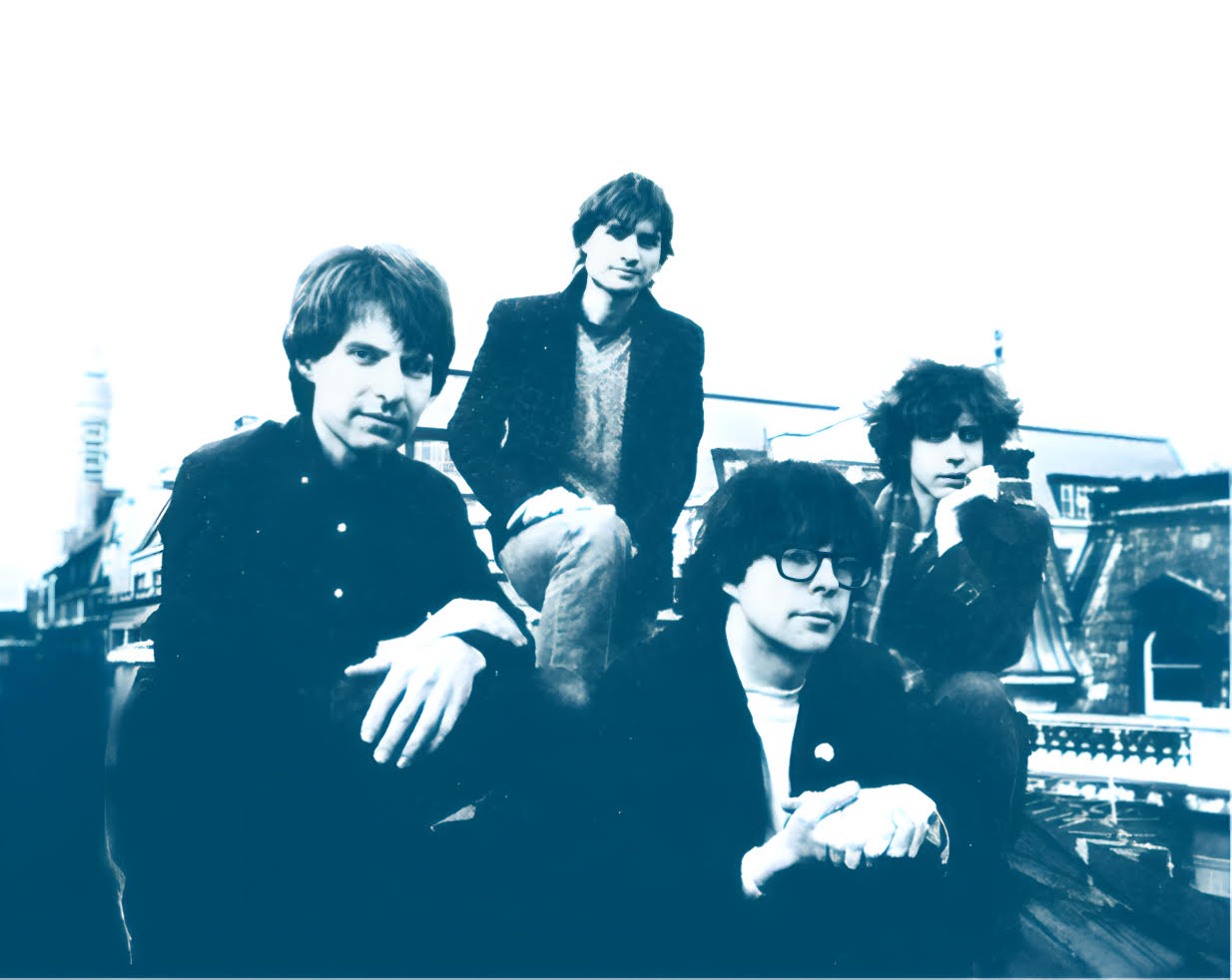WXPN 88.5 Welcomes | 'Stands For Decibels' 40th Anniversary Tour
The dB’s
The Mayflies USA

THE DB’s
The dB’s’ debut album Stands for deciBels will be reissued on CD and vinyl (its first time on vinyl in the US) on June 14, 2024 and all digital platforms on June 7 2024, through Propeller Sound Recordings.
The first digital single will be “Big Brown Eyes,” due out on April 26, followed by “Cycles Per Second” on May 17. Both will be available on streaming services. On album street date, June 7, a third single, “Black and White,” will follow, both audio and video.
The album was produced by the band in association with the late Alan Betrock, founder of the seminal post-punk publication New York Rocker, with Don Dixon, Scott Litt and Martin Rushent mixing. It was originally issued in 1981 on the UK-based Albion label.
Pitchfork cited Stands for deciBels among its 100 Top Albums of the 1980s. AllMusic applauded “a reverence for British pop and arty post-punk leanings . . . rarely is experimentation so enjoyable and irresistibly catchy” and said The dB’s were “the band that bridged the gap between classic ’70s power pop . . . and the jangly new wave of smart pop personified by R.E.M.”
The dB’s are singer/songwriters Peter Holsapple and Chris Stamey along with Gene Holder on bass and Will Rigby on drums. The foursome grew up in Winston-Salem, NC, and helped define what would become the rich North Carolina indie-rock scene but emigrated to New York in the late 1970s and formed the band, frequently appearing at CBGB, Maxwell’s and other influential venues. The band’s early history is well documented on Propeller Sound Recordings’ celebrated 2021 release I Thought You Wanted To Know 1978-1981.
“This was primarily a band-produced and -arranged record, recorded old-school analog in fits and starts at the dawn of what became ‘indie,’ at Blue Rock Studios, with producer Alan Betrock as an éminence grise to intermittently steady the ship. And after we’d filled up all 16 of the tracks on all the songs with a cornucopia of ideas, we lucked out: aces Scott Litt (at Power Station, NYC), Don Dixon (at Drive-In, NC) and Martin Rushent (at Genetic, UK) joined to help mix,” Chris Stamey said.
“We recorded it in the run-down Manhattan of 1979, in the aftermath of the CBGB explosion, when ‘anything goes’ was the rule; we were Southern expats playing on bills with the likes of the Feelies, Bush Tetras, and X, but felt a special camaraderie with a few of the more musically versatile yet still rebellious bands of the time, the Soft Boys, NRBQ, and the Attractions among them,” he added.
The dB’s drummer Will Rigby recalls the 44-year journey in getting vinyl to American fans via a domestic label: “There were no takers among US record labels, so it wound up being released on UK label Albion Records in several European countries plus Japan and Australia, but not in North America. Its history since has included a US release on CD, but this is the first time it has been released on LP in the United States.”
“Stands for deciBels was the first place many people heard The dB’s – thanks to intrepid college deejays who brought their personal copies into the stations. Hopefully those old disc jockeys can now replace their original copies with pristine new ones,” says Peter Holsapple.
The CD edition will include the bonus track “Judy,” a single not included on the original release but available on a late ’80s (long out of print) I.R.S. Records CD reissue.
Propeller Sound Recordings’ Jefferson Holt noted: “It was a natural fit for us to reissue these incredible dB’s albums for old fans and to create new ones. I think these are two of the greatest albums in all of rock ’n’ roll.”
Musicologist / country music historian Tyler Mahan Coe linked the band’s track “Dynamite” from Stands for deciBels and commented on Twitter: “Any time someone is talking about their favorite rock band ever I just pretend they said a bunch of sh*t about how great The dB’s were because that’s the band they’d be talking about if they knew anything.”
R.E.M.’s Mike Mills calls his first listen to The dB’s’ Stands for deciBels a defining moment in his – and his band’s – genesis: “This is the one that let me know we weren’t alone, that there were others out there with the same curiosity, the same willingness to dive into melody, structure and pop sensibility with no fear, no reserve, only joy and well-deserved excitement. I still love listening to Stands for deciBels, and I always will,” he says.
In late summer, the band will announce a fall multi-format reissue of its second album, Repercussion, whose street date will coincide with extremely rare American live dates – details of which are still coming together. The last dB’s national shows were in 2012 on the heels of their studio album of that year, Falling Off the Sky.
THE MAYFLIES USA
If you know anything about Chapel Hill, NC, you know how instrumental a front porch can be. Ideas are generated, plans are made, songs are written, life is romanticized and yes, beers drunk.
Coming together by way of California, Saudi Arabia, Holland, LA, New York and Baltimore, The Mayflies USA call Chapel Hill their home. And all of their time spent on the porch has helped them form their version of rock music- it bounces with infectious melodies, glides with summer-y harmonies, sings with romantic lyrics and pops with loud squalling guitars.”The fact that our band is comprised of a preacher’s kid (Long), a product of a Moral Majority fundamentalist education (Liesegang), and a kid who was raised as an atheist (Price) has to factor into The Mayflies USA somewhere, now that I think about it. Probably we all fled to rock music in reaction,” admits singer and guitarist Matt McMichaels.Maybe their unusual upbringings explain their feverish love of rock music (and the otherworldly escape it provides), and shed some light on their meticulous nature of sound and song construction. Then again, maybe it’s just a coincidence. But, for their third studio album, Walking in a Straight Line, they turned to Keith Cleversley (Flaming Lips, Mercury Rev, Spiritualized) at Chicago’s Playground Studios to capture the live sound of the band and the organic feel of their late 60’s, early 70’s rock influences.”We’re all on a lifelong Beatles kick. That Beatles statement notwithstanding, I think we told Keith we wanted the record to sound like Exile on Main Street. Of course we weren’t equipped with either the musical chops or the collective life experience to make a record quite like Exile, but for better or worse I think that was one of the first things we said when we got to Chicago,” McMichaels said.
The Mayflies USA toured through fall of 2001 and on their return, they locked themselves in their basement and practiced all winter long in preparation for the Chicago sessions.Says McMichaels, “I remember it was around 5am this past New Year’s Eve that we resolved to make this record regardless of what it took. What it took was practicing 6 hours everyday until it was time to leave for Chicago. Perversity and masochism certainly factored into our decision, but we really wanted to make an authentic document.”Recording straight to 2” tape, using minimal overdubs, and no computer editing, the band spent 24 hours a day in the studio, laying down tracks for up to 13 hours a day and then sleeping with the drums, guitars, amps and mics still set up around them. There were moments when they nearly cracked and hightailed it back to Chapel Hill, wanting to leave Cleversley to fix everything on Pro-Tools; but instead they endured the studio life, producing what the band call “a less idealized version of themselves”.
Walking in a Straight Line kicks off with the album’s title track in full post-punk splendor with a jangly, southern-rock zeal while “The Greatest Thing” recalls the Southern-gothic guitar treatment that Peter Buck used to give to early R.E.M. tracks. And if you want a peek into the future sound of The Mayflies USA, listen closely to keyboard-based “Sweet 16”.

